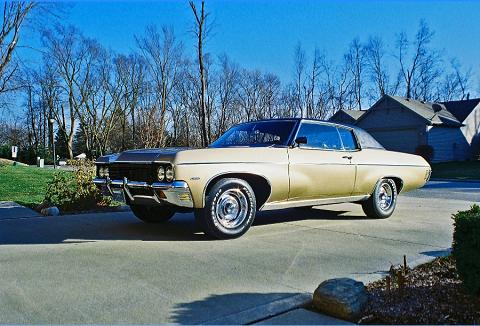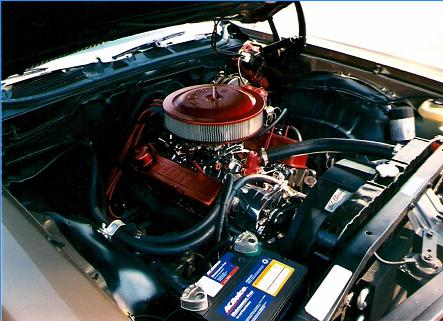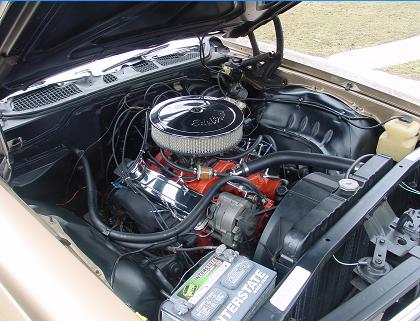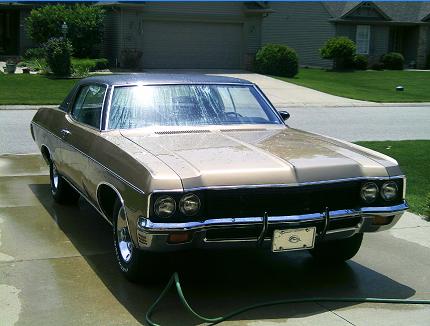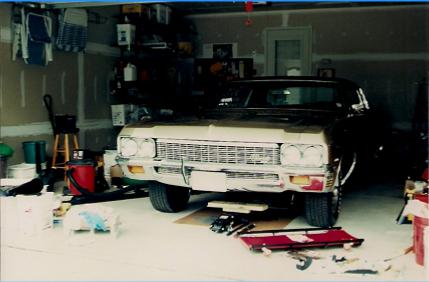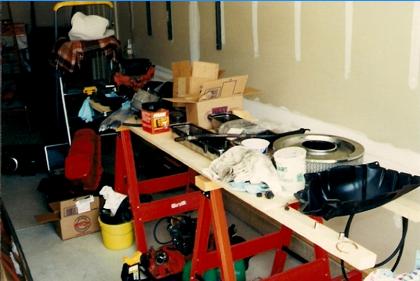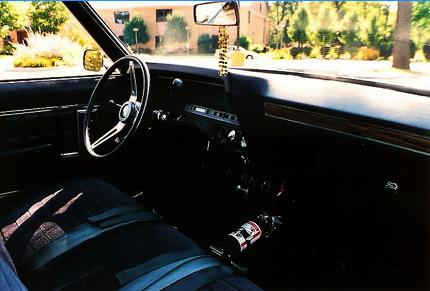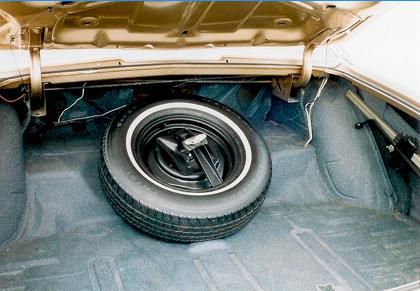

A few of you have written me to ask about my Impala. While I'm initially here to give you the hard-sell on a fantasy saga, I'm always happy to talk tech -- and I'm equally fine with showing off my 1970 Impala Custom (which I actually work on myself). I purchased the car in 2003. I bought this particular car for largely nostalgic reasons, because it reminded me a whole lot of the '70 Impala Sport Coupe that I owned back in high school. My favourite Impala is actually the 1965 model. I'd also love to have a 1959 Biscayne.
I am the fifth owner of this vehicle. It came to me with almost all of the original documentation: a list of all the previous owners (some of whom I've contacted, just for fun), the original invoice, protect-a-plate, owners manual, showroom brochure, build sheet, a post-sale letter of appreciation from the dealer to the original buyer, even some yellow legal pad notes where the salesman and the purchaser discussed and scribbled down various options. Very cool stuff. The only item I'm lacking is the original window sticker. Although facsimile window stickers are available from most collector car resto companies, it's not all that important to me to have one if it isn't the real McCoy.
Above are two views of the engine compartment. The left shot is the set-up it had when I purchased it. The right photo is what it looked like a year later, after I gave it the once-over. Although a cursory examination deemed it fairly clean from the top-view, the lower block was extremely gunky from 30 years of dirt, grime, spills, and probable leaks. I cleaned the motor completely and meticulously -- using solvent-steeped paint brushes and crevice tools, rinsing and wiping every nook & cranny until it was clean enough to accept a new coat of paint -- before proceeding with my intended updates and regeneration. I probably need to include a third shot, since I've made a few more changes since photo #2. Most notably, I switched from the Moroso stamped valve covers to textured black & silver cast covers (the Morosos weren't heavy enough in gauge to prevent leaking). I also added some Hooker headers later, and a few other items.
It had been years since I'd worked on a vintage car, but the original repair texts and the handful of aftermarket books I'd also acquired got me through the alterations without a hitch. A few of the updates were: Edelbrock performer manifold, manual choke 600 cfm carb, and cam set-up (the new cam is only slightly edgier than stock, since I wasn't ready at the time to go the whole nine yards of modifying the valve-train to accomodate a radical cam); new water-pump, alternator, hoses, belts, motor mounts, timing chain and two-piece cover, Fluidampr harmonic balancer, heavy-duty battery cables, heater-core, Moroso deep-sump oil pan with windage tray and oil pump, Holley mechanical fuel pump, MSN spark plug wires and distributor cap. I also installed all-new billet brackets for the alternator & power steering pump, and I moved the oil filter to the engine compartment. I also installed oil and transmission coolers, and seven interior gauges (tachometer, oil temp, oil pressure, water temp, cylinder head temp, voltage, and transmission temp).
The Impala's body is pretty much impeccable. Repainted in 1989 (I'm told), the finish is no longer show-quality (a few chips here and there from typical driving), but there's no rust, and very little evidence of anything less than expert bodywork (I ran a magnet across the car, and only one little section -- the size of a nickel -- indicated possible filler). As you can see, the trunk is clean (and huge), as is the interior. The black vinyl seats are in great shape, but early on I purchased a set of custom-fitted cloth seat-covers, which are holding up very well. Also, that's a fire extinguisher on the hump.
The car boasts a 400ci small block engine and a TH350 trans. After I purchased it, I went on-line and acquired the various reprints of all the original repair manuals, so that I could begin to re-familiarise myself with everything about this make and model of car. Although mostly an original vehicle (I'd wager about 98%), I immediately noted some excessive EGR fittings that suggested that the manifold and carb were from a later model Chevy (remember, I'd owned a '70 when I was younger, so I knew something didn't quite jibe). Sure enough, after researching the manifold stamping numbers, my books told me these two parts were '75 Chevy in vintage. So, I had to make a decision: A) seek out the original equipment and restore the car to stock, or B) modify it to my personal liking, but retain all of the original parts for whoever comes after me, in the case that they would wish to convert it back. Yep, I went with "B."
